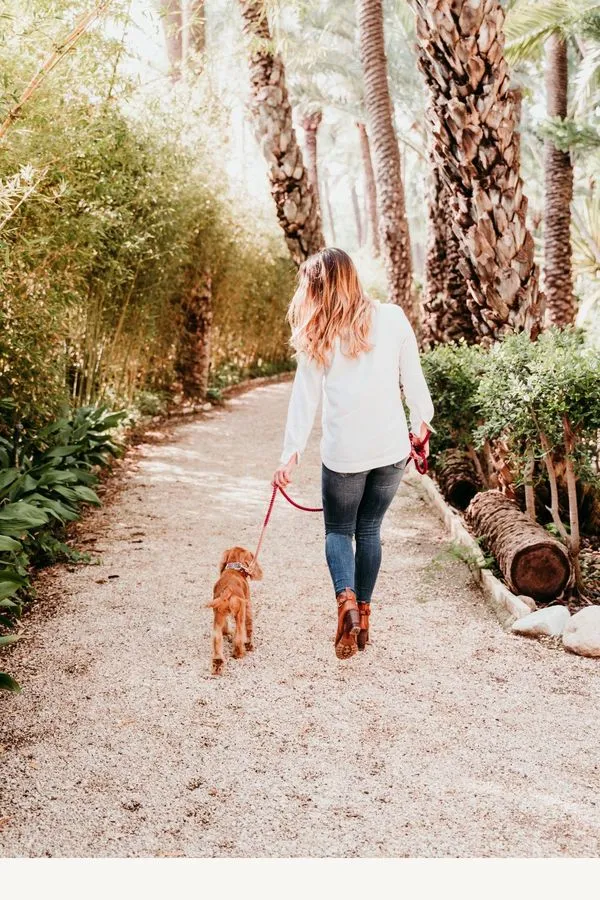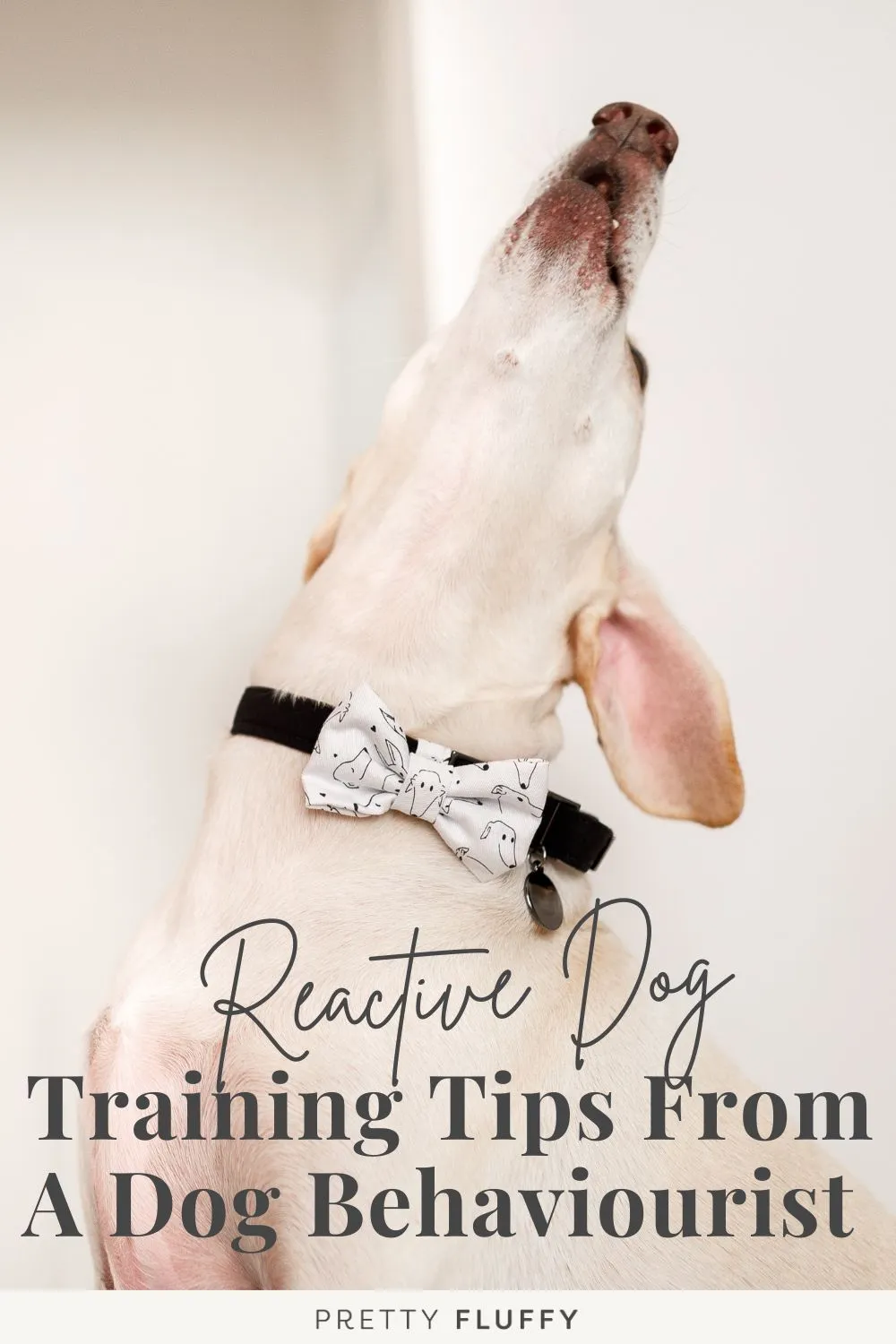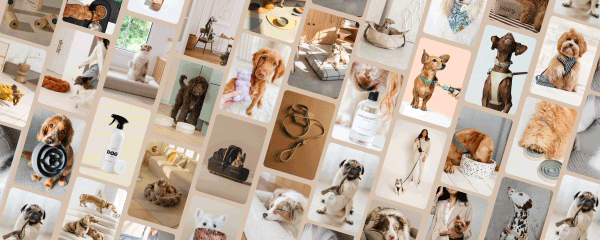How to Train a Reactive Dog: Tips from a Dog Behaviourist

How to help your reactive dog get better, happier & healthier.
Has your dog ever shown signs of leash reactivity? Well you’re certainly not alone.
Knowing how to train a reactive dog was the subject of an email we received recently from a Pretty Fluffy reader:
“Do you have any training advice for reactive dogs?
My nearly 10 year old cavoodle has become dog reactive after a bad experience in a doggy daycare. Before this happened she was so lovely to all dogs. Now it’s random, one dog will go past and she’s ok. But the next dog that walks by, she just loses it!”
If you’re a pet parent who can relate, the good news is it’s never too late to start training a reactive dog.
But first, you need to understand your dog’s behaviour – and what caused their reactivity to begin with.
So to answer all your questions on dog reactivity, we’ve enlisted the help of our resident expert – Sydney-based dog behaviourist, Sophia Gillis.
Read on to see the top reasons why dogs become reactive in the first place, as well as Sophia’s expert dog training tips to help calm your reactive dog – and create a happier home.

How to Train a Reactive Dog: Tips from a Dog Behaviourist
Imagine getting a new puppy and thinking life will be rosy, and that you’ll be spending your days with a cute little fluff ball. One who will love you the way you’ll love them.
Then imagine one day waking up to a rude shock. Suddenly your puppy is biting you, with intention to hurt you!
In my experience as a dog behaviourist, veterinary nurse and dog trainer, the expectations pet parents have with getting a new puppy, compared to a rescue dog, are often times vastly different.
While no one expects a rescue dog to have reactivity issues, for many it won’t necessarily come as a surprise if signs of reactive behaviour appear.
Why? Because when a dog is surrendered to a rescue organisation, more often than not, we don’t get much insight as to their history, or the reasons why they were surrendered. Sadly, it’s through no fault of their own that many end up in rescues.
Whether you have a reactive puppy on your hands on a rescue dog, I’m going to address some common questions about dog reactivity, including causes and reactive dog training tips that may help your dog overcome their behaviour.

What is a reactive dog?
The term ‘reactive’ is quite broad, and doesn’t necessarily mean a dog is aggressive and bites – it means to be overly stimulated by something and respond in an exaggerated way.
A reactive dog simply describes a dog that reacts negatively to a noise, a person or a dog. This could mean growling, having their heckles raised, barking, snarling and lunging forward, even going so far as to bite.
What causes a dog to be reactive?
The reasons for dog reactivity could be due to a number of causes, including:
- Being fearful, anxious and frustrated in various situations
- Not being properly exposed to a big variety of animals, humans, weather elements, locations and noises
- Lacking in proper and controlled socialisation during their critical socialisation period of 3-16 weeks
- Lacking in structure or any form of training from a young age which causes unclear boundaries and expectations
- Genetics should be factored in as some dogs have a stronger disposition to having guarding or herding instincts
- Having previous trauma or abuse
- A combination of all the above
Why is my dog becoming more reactive?
Have you noticed that your dog is becoming more reactive over time?
This may come as a surprise, but when a dog’s behaviour deteriorates, often this is due to your response to it. If you’re not responding in a way that encourages your dog to have a more positive reaction towards something they find scary or stressful, unfortunately this behaviour will only repeat and worsen over time.
As a pet parent it can be a really stressful situation to find yourself in, but you don’t have to deal with it alone. It is important to seek out qualified, force-free trainers and dog behaviourists who can replicate safe scenarios to help your dog build more confidence.
An example of this includes controlled socialisation. This is where a safe and calm space is created for your dog to socialise under strict supervision, so someone experienced can step in where necessary.

Why dogs become reactive on leash
As I often tell pet parents during one of my behavioural consultations or leash-reactive dog training sessions, there is an easy explanation for this.
For example, if little Otis is as sweet as pie everywhere else except when he’s on a leashed walk, the answer is simple: his fight/flight/freeze instinct has kicked in.
What is the fight/flight/freeze response in dogs?
If these terms sound familiar, it’s because these are the same innate fear responses we as humans experience when we are in a confronting and scary situation.
Likewise, the fight, flight or freeze response – also known as hyperarousal or the acute stress response – is a natural survival instinct for canines that kicks in when they feel threatened.
Here are a few signs of each fear response:
FIGHT:
- Bark
- Lunge
- Growl
- Snarl
FLIGHT:
- Creep away
- Run away
- Try to hide
- Cowering
FREEZE:
- Holding completely still
- Moving extremely slowly
Explaining leash reactivity
If your dog isn’t submissive or hasn’t been taught to confidently roll over and expose their belly, they will likely try to flee from a situation where they feel threatened. But of course, this isn’t possible when your dog is tethered to you.
So, in your dog’s eyes, what is the only choice they have left? Take a stand and fight.
However, it’s important to note that the ‘fight’ stance isn’t a real fight stance. All your dog is trying to do by barking and lunging forward is put on a brave face, and tell their threat (whether a dog, human, or object) to stay away from them…or else!
Having a dog with leash reactivity does not mean you should start walking your dog off leash. Proper training with a professional is absolutely necessary here.
If you would like to try training your dog out of being leash reactive, I highly recommend these excellent dog training resources:
- Dog Aggression: Podee’s Aggressive to Other Dogs – YouTube by Dr Sophia Yin
- Managing a Leash-Reactive Dog by the Animal Humane Society
Is my dog reactive or aggressive?
Plainly put, you can use either adjective. One word just sounds a lot less negative than the other!
As explained above, dog reactivity levels can range from low to high. A dog barking at passing strangers in your house, or runners at the park, is considered reactive.
A dog that is categorised as ‘aggressive’ by a professional, has unfortunately moved into the realm of real aggression (ie. where they attempt to cause injury in their fear response).
My humble opinion on this? To be a little kinder with the words we use to describe frightened and damaged dogs – especially those who have experienced trauma through no fault of their own.
How do I stop my dog from being reactive?
Reactive behaviour can be improved or curbed through various training and behavioural modification techniques.
It is important to seek out qualified, force-free trainers and dog behaviourists who can replicate safe scenarios to help your dog build more confidence.
Professional trainers can also delve deeper by conducting a behavioural consultation to discuss the underlying causes of the behaviour, and develop a tailored training package for your dog.

How do I train a reactive dog?
Living with a reactive dog can be a challenging and upsetting experience, but with bucket loads of patience, consistency, and proper training techniques, it is possible to help your dog overcome their reactive behaviour.
The following are some of my top training tips to prevent or reduce dog reactivity:
MY TOP 5 REACTIVE DOG TRAINING TIPS
- Understand the cause of the reactive behaviour.
- Avoid triggers: Avoid situations that trigger your dog’s reactive behaviour, such as loud noises or crowded areas. Gradually expose your dog to these triggers in a controlled environment, while using positive reinforcement techniques to help your dog associate these situations with positive experiences.
- Train your dog: Positively reinforcing a behaviour you wish to see more of is the best way to train your dog to behave the way you want. Reward calm and focused behaviour with their favourite treats, verbal praise, and toys.
- Teach your dog to wear a muzzle: Depending on the severity of reactivity, this might be necessary. Dogs who have swung towards the aggressive side of being reactive, should never be allowed to be off leash around others they don’t know. Keeping them on leash is absolutely crucial, as this ensures their safety and the safety of others.
- Seek out the help of a professional: Whether your dog’s reactive behaviour has become severe, or you’re struggling to make progress with training, always seek the guidance and support of a positive trainer or behaviourist. Training methods can vary, so if you’ve not yet found a dog trainer you’re both comfortable with, find a professional better suited to you and your dog’s needs.
Can a reactive dog be cured?
Being reactive isn’t a disease, so it can’t be ‘cured’ as such. That being said, it is a behaviour that can be modified and lessened to the point of good management.
Remember, dealing with a reactive dog takes time, patience, and consistency. With the right training and support, you can help your dog overcome their reactive behaviour and enjoy a happy, fulfilling life together – the ultimate goal we all share as pet parents!
References & additional material:
- ‘What Is Aggression? Dog Reactivity vs. Dog Aggression’ – Amercian Kennel Club (AKC)
- ‘How Can I Safely Walk My Reactive Dog?’ – American Animal Hospital Association (AAHA)
- ‘Home of Dr Sophia Yin’s Low-Stress Handling’ – Cattle Dog Publishing
Before you go…!
Whether it’s dog reactive tips you need, or your best friend is showing signs of other concerning behaviours, it can be stressful knowing what to do.
We hear you! That’s why you’ll find a range of expert dog training articles right here on Pretty Fluffy:
About Sophia Gillis

Sophia Gillis has been working in a professional capacity with dogs and cats for over 13 years as a dog behaviourist, veterinary nurse and practice manager.
Sophia currently runs her own business with her trusted team, providing behavioural consultations and dog training, as well as running a doggy daycare service focusing on controlled socialisation. Sophia also offers short phone and live text consultations for pet parents in need of quick professional guidance. She strongly believes in contributing to her local community and fostering good relationships with her clients.
Sophia is pictured here with Mush, her adopted maltese x shih tzu x toy poodle. Image credit: Sarah Van Treel.


Pretty Fluffy is the ultimate lifestyle destination for dog lovers. Discover the best designer dog brands and emerging small pet businesses, the latest dog accessories, healthy dog treat recipes, dog training tips and more. Thank you for being part of our dog-loving community!








